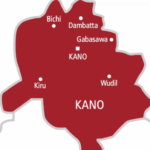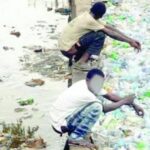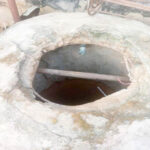At the onset of the coronavirus outbreak in Nigeria, the premonition was the likelihood of Kano State becoming the epicentre of the pandemic in the country, if not in Africa.
With its estimated population of 20 million and the buzzing commercial activities, the state is known for, when mysterious cases of mass deaths were being announced, the fear became pronounced.
However, in the space of three months, the state changed the narratives.
From being the state churning out the second-highest daily confirmed cases to recording the lowest or even zero cases despite also its increased sample collection and testing capacity.
Between June 21 and 27, for instance, the state posted a total of 11 new cases, according to the Nigeria Centre for Disease Control (NCDC), compared to over 100 cases in the last two days of April.
Comparatively, NCDC data as of July 29 show that while Lagos (the only state that can be compared with Kano in population and commercial activities) sits on top of the log with 14, 954 cases, Kano sits on the 6th position with 1,584 confirmed cases.
In April, the state had one molecular laboratory, which even had an incident that led to it being shut for several days for decontamination.
By July, molecular laboratories in the state stood at 5(+1), as the technical team managing the outbreak seems to be classifying it.
There are five functional molecular laboratories in the state itself (two privately owned); however, with its daily sample collection exceeding the testing capacity of the five laboratories, samples from the state are also taken to the NCDC laboratory in Gaduwa, Abuja. Hence, the 5(+1).
The state now has a testing capacity of about 1,300 daily in the 5(+1) laboratories and between 1,700 and 2,200 samples are collected on a daily basis.
To establish what was responsible in this change of fortune for the state in three months, Daily Trust had the exclusive opportunity to sit down with three of the key technical members of the state’s COVID-19 response team: the coordinator, Dr.Tijjani Husseini; his deputy, Dr. Sabitu Shuaibu Shanono, as well as Dr. Basheer Lawan, the Head of Surveillance of the team.
Getting the three of them to sit down together with our correspondent at the Emergency Operation Centre (EOC) at the Mohammed Abdullahi Wase Teaching Hospital, where they coordinate the activities, shed light on some of the activities that led to the change of fortune.
From the EOC around 1:30pm on Wednesday to the government house, where they were scheduled to brief the government and then back to the EOC when the briefing was rescheduled, our correspondent stuck with them and finally got an audience with the trio around 4pm. The three of them are arguably among the busiest in the country.
“From the point of policymaking, you will see that from the formation of the task force, the state governor had placed emphasis shown by the combination of the membership of the task force.
“Its headship, being the deputy governor, shows from the beginning, we are going to approach it differently,” Dr. Shanono kick-started the discussion.
He also observed that the state was pro-active “in the sense that a week or two before we recorded the first case in Kano, we had put in place isolation centres with health care workers manning those centres and running shifts even when there was no one.”
This, he said, gave the state a grip on the situation, noting that “as things were getting worse, we are ahead of the events as they were unfolding. Most at times, we tend to increase the number of our capacity even before that number of that capacity is overstretched.”
Joining the discussion, Dr. Lawan, the head of surveillance, observed that based on the policy approach, there were three cardinal features that the government wanted to see in the response.
“It has to be preventive generally; it has to be curative in case we have cases and it also has to be palliative when you consider individuals being affected so as to see what can be done to lessen the burden on them,” he said.
The 50-member task force, which was inaugurated after the activation of the EOC even before the state’s index case gave room for other innovative approaches, which included safeguarding the territory of the state by putting checkpoints at the borders of the state as well as putting in place a holding area at the Aminu Kano International Airport, he said.
10 as against 5 pillars
After the first case was recorded, the task force restrategised and was restructured into 10 pillars as against the five or six pillars that operate in other states. These 10 pillars are: Coordination; Surveillance; Laboratory; Risk communication & community engagement; and Case management.
Others are: Infection Prevention & Control; Persons of Interest; Safety & Security; Monitoring, Evaluation & Research; and Evacuation & Ambulance Service.
It was gathered that the multi-sectoral and multi-disciplinary approach in the selection of the membership of the task force informed the essential role played by the state’s ministry of environment, i.e. the disinfection of important structures and places like markets, mosques, churches, e.t.c.
Kano’s several firsts
“There were some pro-active innovations that emanated from Kano that we were even far ahead of the NCDC and other states. We started fix sample collection site in Kano. What about mass community sample taking and testing? We commenced before any other states in the country. These are major components of this outbreak response that were firstly seen in Kano,” Dr. Lawan said.
When Dr. Lawan delved into verbal autopsy deployed by the state after the mysterious mass deaths recorded in April, he pricked the attention of Dr. Husseini, the response team coordinator and Executive Secretary of the state’s Primary Health Care Management Board, who hitherto had been engrossed with some files on his desk.
“The Baba of the verbal autopsy is here”, Dr. Shanono, who doubles as the Director-General of Kano State Agency for Control of Aids (K-SACA), interjected casually.
On the controversy generated when the state decided to use verbal autopsy to ascertain the cause of the mysterious mass death and the relative novelty of the approach in Nigeria, Dr. Husseini said “It is a well-known medical approach. There was a project initiated by the Federal Ministry of Health sometimes in 2016 on the Maternal Perinatal Death Surveillance review. This was basically a verbal autopsy.”
Isolation centres to home-based care
With five isolation centres in the state, at a point, fully occupied, Dr. Lawan said “that necessitated an innovative approach of home-based care. We now have a number of people that have graduated from the home-based care and we still have some active cases that are on home-based care.”
One of the current beneficiaries of the state’s home-based care is Ibrahim Abubakar, a 36-year-old businessman from Dorayi area of Kano metropolis, who tested positive for coronavirus on his return from India about two weeks ago.
Abubakar said though he tested negative before he left India but had to do another test on arrival in compliance with the extant laws and COVID-19 protocols in the country.
He said after testing positive and though asymptomatic, he self-isolated at home on the advice of health officials, while the personnel of NCDC kept monitoring his condition. He hopes to have overcome the virus when he undergoes his second test in the next few days.
Push and pull approach of sample collection
In line with the guidelines of the World Health Organisation (WHO), which stated that widespread testing remains essential in identifying, isolating and treating infected people, the state adopted two processes in its sample collection – the push factor and the pull factor.
“The push factor was the earlier one when we used our Rapid Response Team (RRT) where they respond to calls at our call centres. It reached a point when the calls were so many that the available RRT could not handle it even when we increased their numbers.
“So, we became proactive by selecting some health facilities to serve as catchment areas of some communities and we placed our sample collection sites there and we called them fixed sample collection sites, which reduced the burden on RRT having to go round,” Dr. Lawan said.
This process continued until the point of mass community transmission, which birthed the second process of sample collection.
“We reformulated and came up with something new. Rather than individuals coming to the fixed sample collection sites, we said ‘let us go to them and massively collect their samples and see how far’. That yielded a quality result that mandated us to continue with the system, i.e. the mass community testing,” he added.
Community and stakeholders’ engagement
The team said Kano was successful in getting the cooperation of the masses, especially as it relates to sample collection, because of the integration of all the activities on its 10 pillars, majorly the pillars of coordination, surveillance, laboratory and the risk communication & community engagement.
“In our response, we didn’t just leave it among the technical groups but we engaged traditional and religious leaders, community leaders including youth and women groups within the communities.
“Before we go to any community for sample collection, we have a series of meetings within the community telling them about what we wanted to do and the benefits. So, by the time we go for community testing, these community structures have already mobilised enough because they have disseminated the information to the community.
“At the beginning of this community sample collection, it was seen that the executive governor follow us to most of this area. His visitations of these communities added credit to what we are doing. It gives them (community) that sense of belonging that if the governor can be here together with these healthcare workers, then we (community) also need to do our part,” Dr. Shanono explained.
On his part, Dr. Husseini added that the response team had engagement with over 40,000 stakeholders since the outbreak and the impact of this could be seen by all.
“In all the five emirates council, the governor and the technical team were able to engage all the relevant stakeholders; from meetings with imams to district heads and almost everyone. This brought about the synergy,” he said, adding that the result was the high number of samples being collected in the state on a daily basis.
“In some states, to test 100 samples a day is a herculean task but in Kano, daily we take more than 2,000 samples for testing. In the past one month, no state is testing as much as Kano does. Kano is contributing about 16% to national samples that are tested and this is despite the fact that we started late compared with Lagos,” he said.
Dr. Husseini said the state also instituted “robust contact tracing” teams, as well as house to house search of potential active cases.
Political will
Beyond the physical presence of the chief executive of the state, the response team said ensuring that resources are constantly made available for the response efforts is also contributing to the success story.
“You can have beautiful plans and have all the designs of this world, but when you don’t have the resources to implement, everything will come to naught,” Dr. Hussaini added.
Technology and recovering from incident at molecular lab
Deployment of Information and Communications Technology (ICT) is another strategy the team observed as a plus to the campaign.
“Before we had our first case in Kano, the state government had developed an application used to report suspected cases. From then on, we moved to the level of having very good platforms where we can manage and observe patients, especially those on self-isolation or being managed within the home-based care,” Dr. Shanono added.
On the incident at the state’s molecular laboratory in April, Dr. Husseini said the uproar was perhaps connected with the belief in some section that “Kano people” do not know what they are doing.
Contrary to this, Dr. Husseini said what happened was not as a result of lack of expertise but “it was a normal occurrence and as soon as that happened, the team sat and restrategised and arranged for our samples to be taken to Abuja to solve the immediate problem.
“Then we started talking to people and several groups like the Aliko Dangote Foundation and that was how we got the 54gene lab and within no times we got five functional laboratories.”
Not yet uhuru
With all the progress, the team agreed it would be folly for anyone to think the pandemic is over and even Kano state cannot rest on its oars, stressing that final victory will only be when the virus is rooted out of the country with all means of re-entrance safely locked.
Next on the agenda of the team, they said is to carry out a research on community perception of the virus because this will play a key role in winning the war.
But before then, Kano’s change of fortune in the fight against the virus and the strategies adopted might be worth studying by other states, the team noted.
“Earlier on, people were just mocking Kano state; but later on, the way and manner things went, people are now trying to associate with the state because of the turnaround of event and successes being recorded as far as the outbreak response is concerned,” Dr. Lawan, the head of the response team’s surveillance pillar, concluded.

 Join Daily Trust WhatsApp Community For Quick Access To News and Happenings Around You.
Join Daily Trust WhatsApp Community For Quick Access To News and Happenings Around You.


